Three 2Ω reistors , A,BandC, are connected as shown in (Fig. 3.44). Each of them dissipates energy and can withstand a maximum current that can flow through the three resistors ?
 .
.
As P=I2R,I=√PR
Thus, maximum current that can flow through 2Ω resistor (rating 18 W), I=√18W2Ω=3A.
Since resistor B(=2Ω) and resistor C(=2Ω) are in parallel, and the current through their combination, which is in series with resistor A(=2Ω) is also 3A, current through BandC (having equal resistance and in parallel) =3A2=1.5A.
Topper's Solved these Questions
- ELECTRICITYBOOK - PRADEEPCHAPTER - ELECTRICITYEXERCISE - (Exemplar)Long Answer
6 Videos
- ELECTRICITYBOOK - PRADEEPCHAPTER - ELECTRICITYEXERCISE - (Additional)Very Short Answer
47 Videos
- ELECTRICITYBOOK - PRADEEPCHAPTER - ELECTRICITYEXERCISE - NCERT Exercise
18 Videos
- MAGNETIC EFFECTS OF ELECTRIC CURRENTBOOK - PRADEEPCHAPTER - MAGNETIC EFFECTS OF ELECTRIC CURRENTEXERCISE - Mock Test
21 Videos
Similar Questions
Three 2Ω resistors, A, B and C are connected as shown in figure. Each of them dissipates energy and can with stand a maximum power of 18 W without melting. Find the maximum current that can flow through the three resistors ?
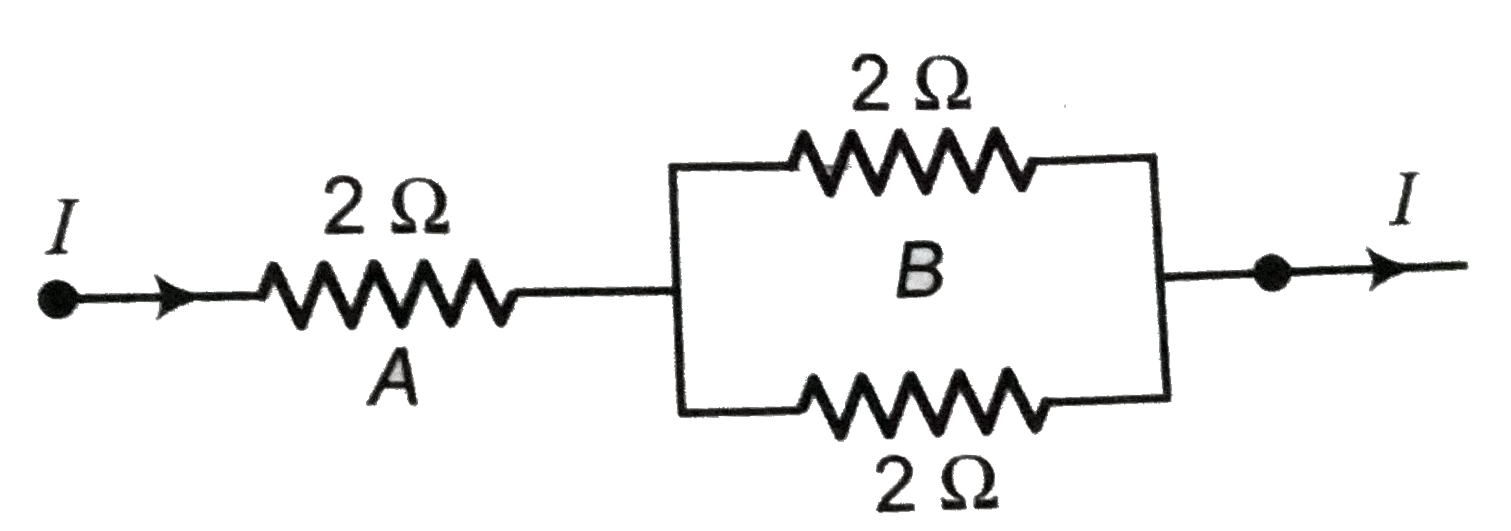
View SolutionDraw a circuit diagram of an electric circuit containing a cell, a key, an ammeter, a resistance of 4Ω in series with a combination of two resistors (8Ω) in parallel and a voltmeter across the parallel combination. Each of them dissipate maximum energy and can withstand a maximum power of 16W without melting. Find the maximum current that can flow through the three resistors.
View Solution
Knowledge Check
Three 10Ω,2W resistors are connected as in Fig. 7.34. The maximum possible voltage between points AandB without exceeding the power dissipation limits of any of the resistors is
 A5√3VB3√5VC15VD53V
A5√3VB3√5VC15VD53V
Three resistances each of 3Ω are connected as shown in fig. the resultant resistance between A and F isA9ΩB2ΩC4ΩD1Ω
Draw a circuit diagram of an electric circuit containing a cell, a key, an ammeter, a resistance of 4Ω in series with a combination of two resistors (8Ω) in parallel and a voltmeter across the parallel combination. Each of them dissipate maximum energy and can withstand a maximum power of 16W without melting. Find the maximum current that can flow through the three resistors.
View Solution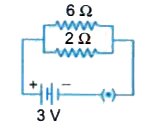
In the circuit shown here current flowing through 3Ω resistor is _____ .
View SolutionFive resistors, each 3Ω, are connected as shown in (fig. 3.23). Calculate the resistance between the points
(a) A and b
between the point CandD.
 .
.
View SolutionThree 200Ω resistors are connected as shown in figure. The maximum power that can be dissipated in any one of the resistor is 50 W. Find the total power in watts dissipated in the circuit for maximum voltage across the terminals A and B.
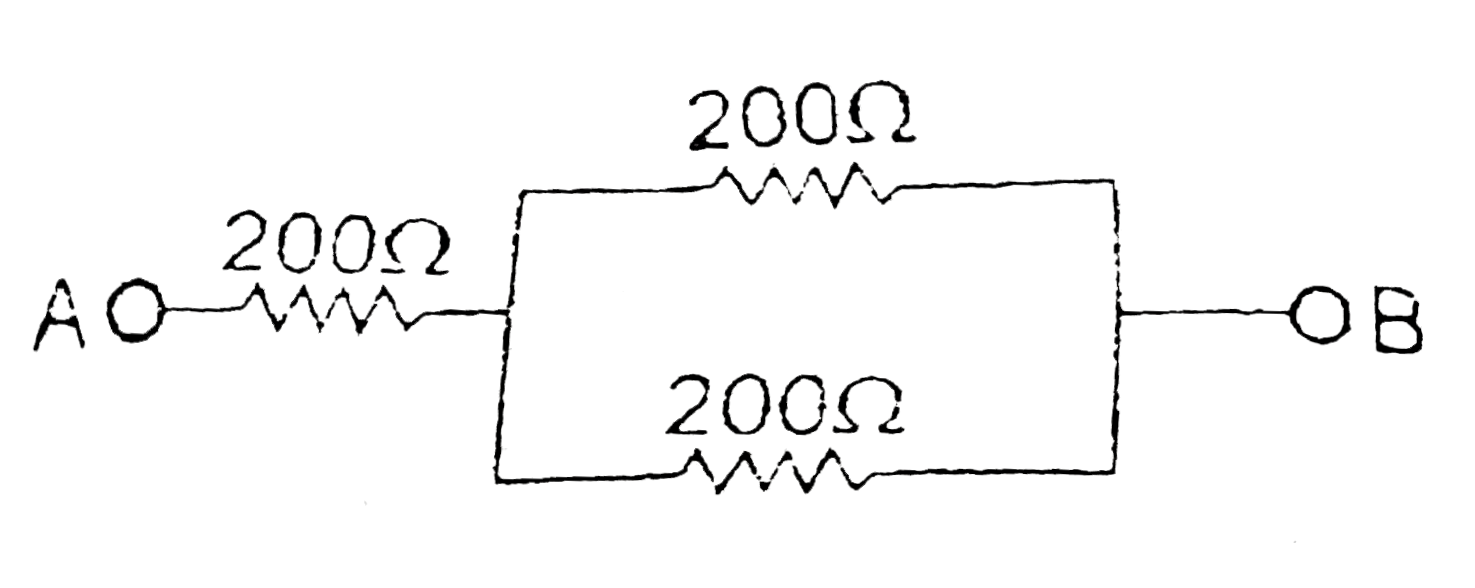
View SolutionThree 200Ω resistors are connected as shown in figure. Any of these resistors breaks down if the rate of heat dissipation in it exceeds 50 W. Then, the maximum rate of total heat dissipation in the three resistors together is __________ W.
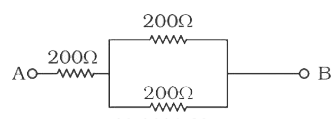
View SolutionIn the net work three identical capacitors are connected as shown. Each of them can withstand to a maximum 100V potential difference. What is the maximum voltage that can be applied across A and B so that no capacitor gets spoiled.
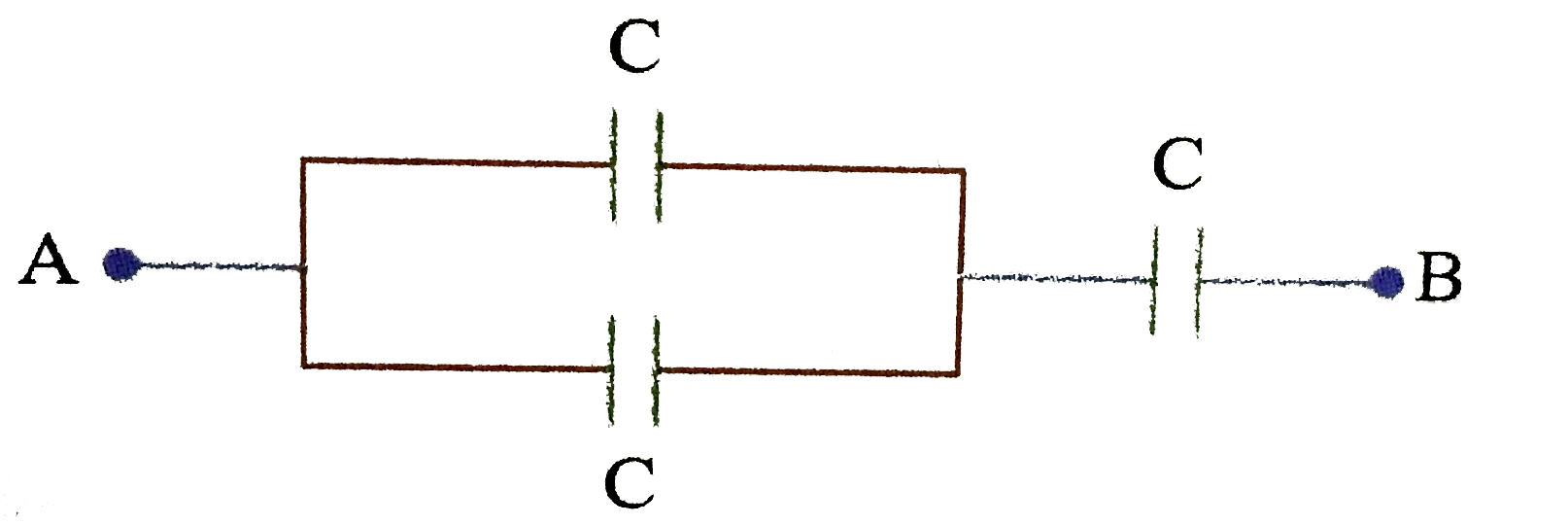 .
.
View Solution
